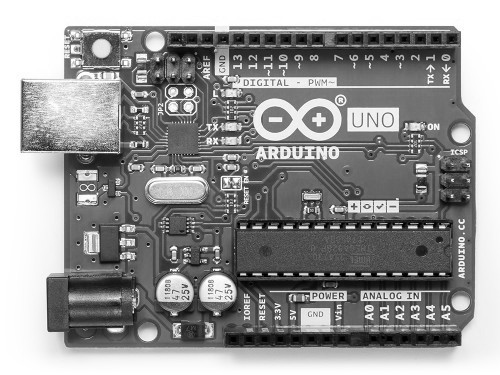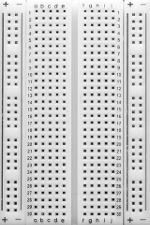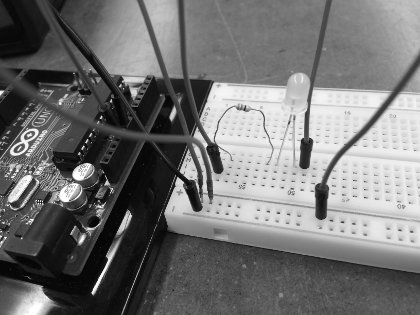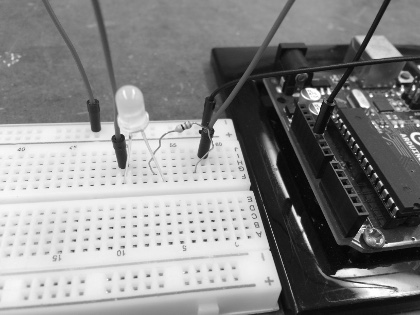Arduino Worksheet 1
-
We say electricity flows from positive to negative. Which is 5V? GND?
-
Electrical flow has an analogy with water flow (read an analogy explained). Explain the difference between 5V and 120V of potential in terms of the water analogy.
-
Label on the figure below:
- 5V power
- Ground
- Built in LED light (connected to “pin 13”)
- Main digital pins
- Analog input pins

-
Illustrate how the holes in a breadboard are connected. There are several different kinds of connections, show them all.

In particular:
- Does 2a connect to 3a?
- Does 4e connect to 4g?
- Does + on the left connect to + on the right?
- Does - on the right connect to + on the right?
- In a full-size breadboard does + in the top left connect to + on the bottom left?
-
Does in matter which way you insert a resistor into a circuit? Explain.
-
Does it matter which way you insert an LED into a circuit? Explain.
-
Draw and label the electrical symbol for a resistor. (You can look up electrical symbols as a PDF or on an electrical symbols web page if you need to know more.)
-
Draw the electrical symbol for an LED. Label the positive (+) and negative (-) sides. (Fancy vocabulary: positive is “anode”, negative is “cathode”.)
-
Draw a circuit that shows an LED and a 330 Ω resistor connected to 5V and GND.
-
There are some mistakes in the wiring below. Identify them and explain how to fix them. The LED is supposed to be wired so it is always on.

-
There is at least one mistake in the wiring below. Identify the mistake(s) and explain how to fix. The LED is wired so that Pin 11 can turn it on and off.
